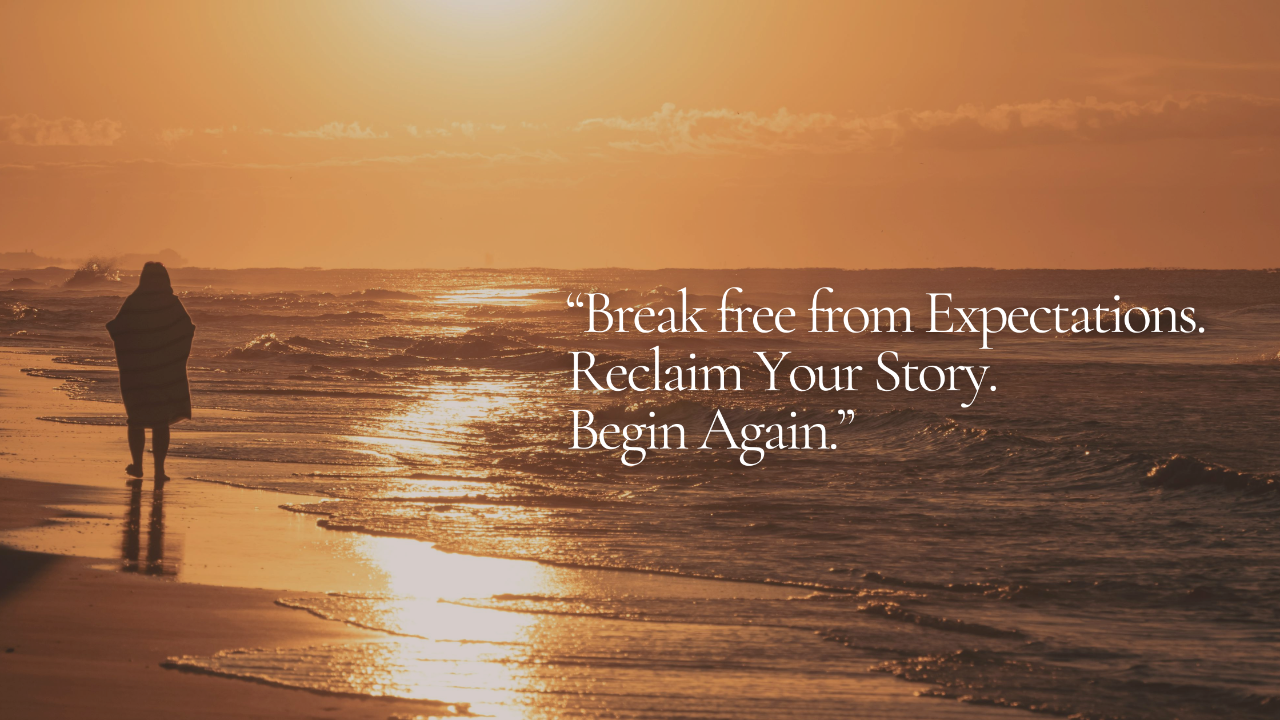10 Transformative Strategies for Navigating Life's Stressors and Building Resilience
Jan 19, 2025
Creating an environment conducive to emotional regulation and building capacity to navigate life’s stressors is essential for overall well-being. Stress is an unavoidable part of life, but how we manage it can significantly impact our physical health, emotional stability, and relationships. Let’s embark on a journey of transformation—where stories of change and practical tips come together to illuminate the path toward balance and resilience.
Understanding Stress and Regulation
Picture this: a young professional named Emily juggling deadlines at work, caring for her aging parents, and trying to maintain friendships. One evening, she finds herself sitting amidst piles of paperwork in her cluttered living room, feeling overwhelmed and emotionally drained. Stress has taken a toll on her well-being, and she realizes it’s time for a change.
Stress is the body’s response to demands or challenges, whether real or perceived. For Emily, it manifests as emotional dysregulation, making it hard to respond thoughtfully to situations. Emotional regulation involves recognizing, understanding, and managing emotions to maintain balance and resilience. Like Emily, by creating an intentional environment, you can influence your emotional responses and better handle life’s inevitable ups and downs.
1. Declutter Your Physical Space
The first thing Emily did was tackle her living space. She started small—clearing off her coffee table. As she sorted through the clutter, she felt a sense of relief and clarity. Her home began to transform into a haven rather than a source of chaos.
Steps to declutter your space:
- Start small: Begin with one room or a specific area, such as your desk or bedside table.
- Adopt a minimalist mindset: Keep only items that serve a purpose or bring joy.
- Create zones: Designate specific areas for relaxation, work, and play to reduce overstimulation.
- Maintain cleanliness: A clean environment promotes a sense of control and calmness.
Emily’s experience shows that by organizing your physical space, you create a foundation for mental clarity and emotional stability.
2. Incorporate Soothing Sensory Elements
One weekend, Emily decided to add sensory elements to her home. She hung nature-themed artwork, bought a lavender-scented candle, and played soft instrumental music in the evenings. These changes helped her unwind after stressful days.
Tips for enhancing your sensory environment:
- Visual: Add calming visuals like nature-themed artwork or soft lighting.
- Auditory: Play soothing music, white noise, or nature sounds.
- Olfactory: Use calming scents like lavender, chamomile, or eucalyptus through candles or essential oils.
- Tactile: Incorporate cozy textures such as soft blankets, comfortable furniture, or stress-relief tools like fidget items.
- Taste: Keep comforting herbal teas or healthy snacks on hand for grounding.
These sensory additions became Emily’s sanctuary, allowing her to feel safe and supported.
3. Establish Routines
Emily’s mornings used to be rushed and chaotic, leaving her frazzled before her day even began. She decided to create a morning routine—stretching, journaling, and savoring a cup of tea before heading to work. This small change made a big difference.
Key routines to consider:
- Morning routine: Start your day with intentional practices like stretching, journaling, or mindfulness exercises.
- Work routine: Create a schedule that includes focused work periods, regular breaks, and boundaries around work hours.
- Evening routine: Wind down with calming activities like reading, meditating, or reflecting on your day.
- Sleep routine: Aim for 7-9 hours of quality sleep by maintaining a consistent bedtime and minimizing screen time before bed.
For Emily, routines provided a sense of control that supported her emotional regulation.
4. Foster Supportive Relationships
Emily recognized the importance of connection. She reached out to a close friend, Sarah, who had always been a source of encouragement. Together, they committed to weekly walks and honest conversations, strengthening their bond.
Ways to cultivate supportive relationships:
- Communicate openly: Share your thoughts and feelings with trusted friends or family members.
- Set boundaries: Protect your emotional energy by saying no to toxic or draining relationships.
- Seek connection: Join groups or communities aligned with your interests or values.
- Practice gratitude: Show appreciation for the people who uplift and support you.
- Engage in active listening: Strengthen relationships by being fully present during conversations.
Supportive relationships buffered Emily’s stress and enhanced her resilience.
5. Practice Mindfulness and Meditation
Sarah introduced Emily to mindfulness practices. Emily started with simple breathing exercises and short meditations, finding moments of peace in her otherwise busy life.
Mindfulness practices to try:
- Breathing exercises: Focus on slow, deep breaths to calm your nervous system.
- Body scan meditation: Tune into physical sensations to increase awareness and relaxation.
- Gratitude journaling: Reflect on positive aspects of your life to shift your mindset.
- Mindful movement: Engage in yoga, tai chi, or simple stretching.
- Nature walks: Immerse yourself in natural surroundings while paying attention to sights, sounds, and sensations.
Regular mindfulness practices helped Emily respond more calmly to stress.
6. Nourish Your Body
Emily realized that her diet of quick snacks and coffee wasn’t serving her well. She began preparing balanced meals, drinking more water, and taking evening walks. Over time, she felt more energized and emotionally stable.
Tips for nourishing your body:
- Eat balanced meals: Incorporate whole foods, lean proteins, healthy fats, and complex carbohydrates.
- Stay hydrated: Drink plenty of water throughout the day.
- Exercise regularly: Engage in physical activities you enjoy, such as walking, dancing, or swimming.
- Limit stimulants: Reduce caffeine and sugar intake to avoid energy spikes and crashes.
- Prioritize rest: Allow time for relaxation and recovery.
7. Build Emotional Awareness
Through journaling and reflection, Emily began to identify patterns in her emotional responses. She noticed triggers and learned to name her emotions, which helped her navigate challenging situations.
Strategies for building emotional awareness:
- Track your emotions: Use a journal or app to note your feelings and what prompted them.
- Reflect regularly: Spend time understanding your emotional patterns.
- Name your emotions: Labeling feelings can reduce their intensity and clarify your needs.
- Seek therapy or coaching: Work with a professional to explore deeper emotional challenges.
Emily’s increased emotional awareness empowered her to respond to stressors with intention.
8. Cultivate a Growth Mindset
Instead of seeing setbacks as failures, Emily began viewing them as opportunities for growth. She celebrated small wins and practiced self-compassion, allowing her to move forward with confidence.
Steps to cultivate a growth mindset:
- Reframe challenges: View setbacks as temporary and part of the learning process.
- Celebrate progress: Acknowledge small wins and milestones.
- Practice self-compassion: Be kind to yourself during difficult times.
- Embrace curiosity: Approach problems with a desire to learn and explore solutions.
This growth-oriented perspective made Emily more adaptable to stressors.
9. Limit Digital Overload
Emily realized that constant notifications were draining her energy. She set boundaries around screen time and took periodic digital detoxes, finding more time for meaningful activities.
Ways to limit digital overload:
- Set boundaries: Designate tech-free times or zones in your home.
- Unplug regularly: Take breaks from devices to reconnect with yourself and your environment.
- Curate your feed: Follow accounts that inspire and uplift you and unfollow those that drain your energy.
- Practice digital detoxes: Periodically disconnect from screens for a few hours or days.
Reducing digital overload helped Emily stay present and grounded.
10. Seek Professional Support
When Emily felt stuck, she reached out to a therapist who guided her in developing personalized strategies for stress management. This support accelerated her journey toward balance.
When to seek professional help:
- Chronic stress: Persistent feelings of overwhelm or burnout.
- Emotional instability: Difficulty managing or understanding your emotions.
- Major life transitions: Navigating significant changes or challenges.
- Desire for growth: Wanting to enhance your emotional capacity and resilience.
Professional support gave Emily the tools she needed to thrive.
Creating an environment for becoming more regulated and increasing your capacity to navigate stress is a multifaceted process. Emily’s journey shows that with intentional changes—from decluttering her space to nourishing her body and seeking support—it’s possible to transform stress into strength. By incorporating these strategies gradually, you too can build a sanctuary of calm and resilience, empowering you to face life’s challenges with grace and confidence.
View The Entire Collection
See all our blog posts to discover valuable insights and tools for navigating trauma and healing with guidance and support.












